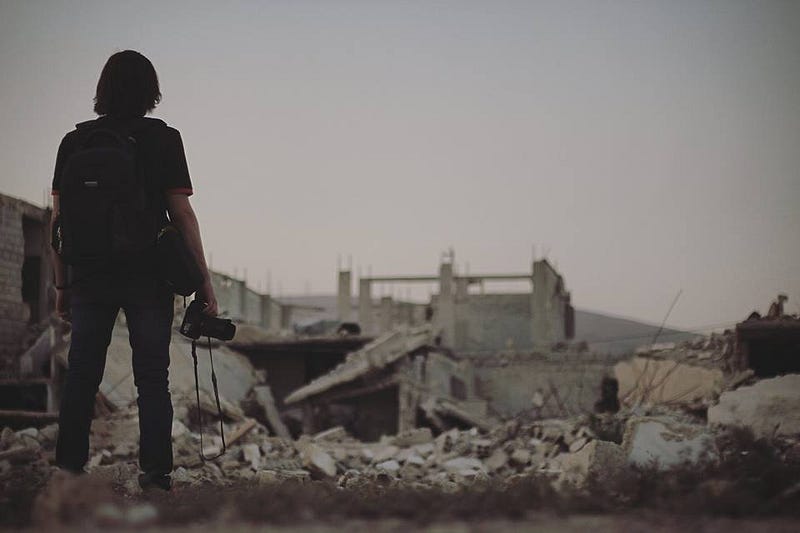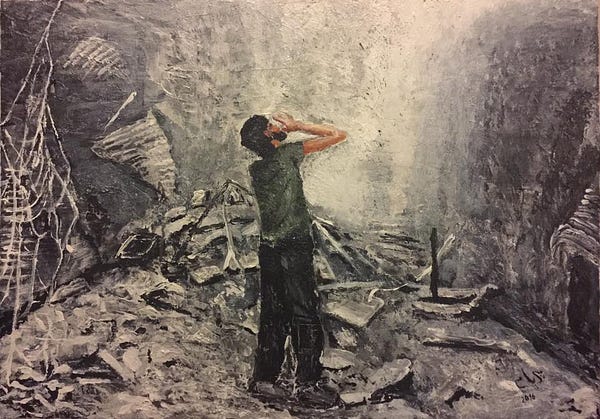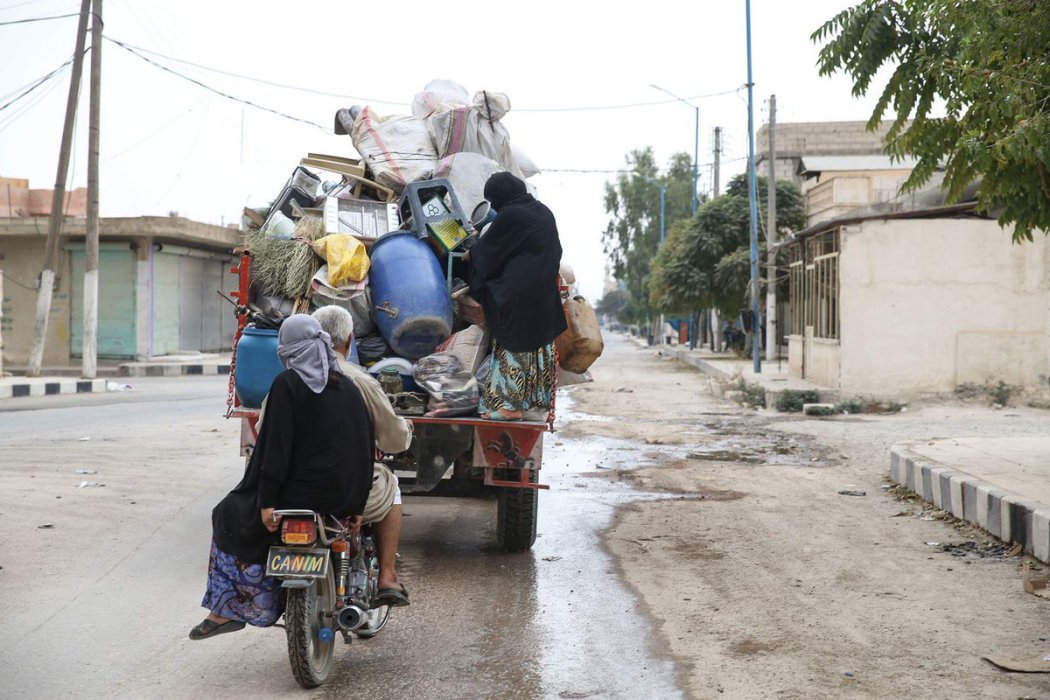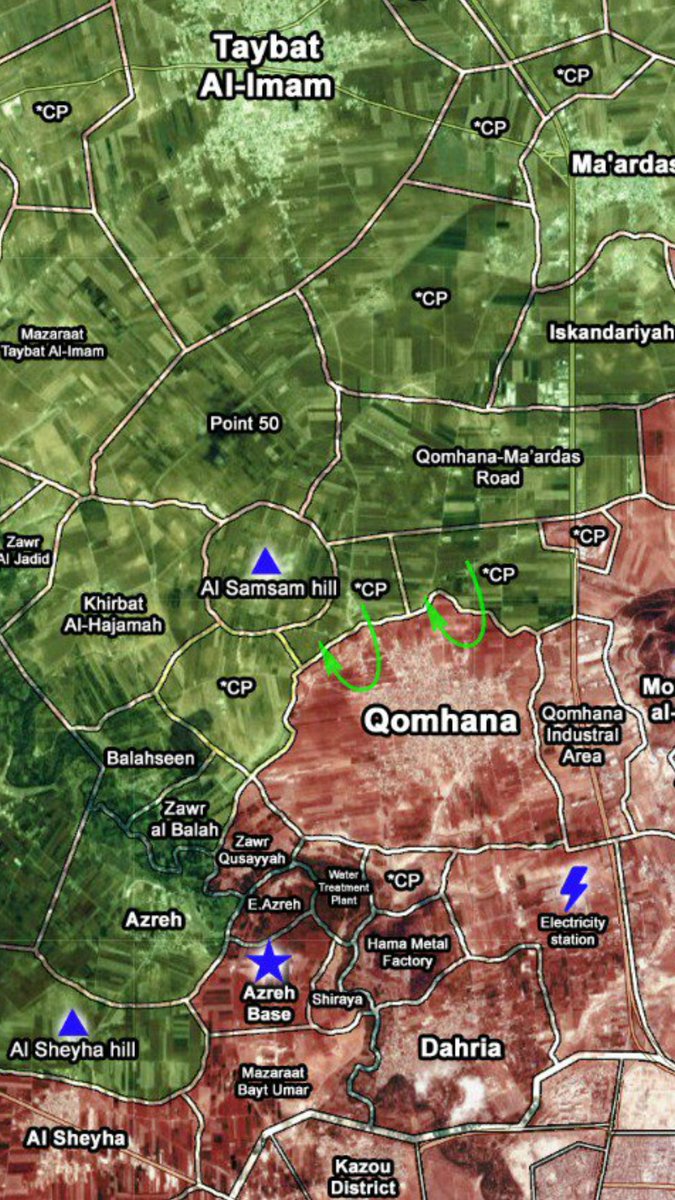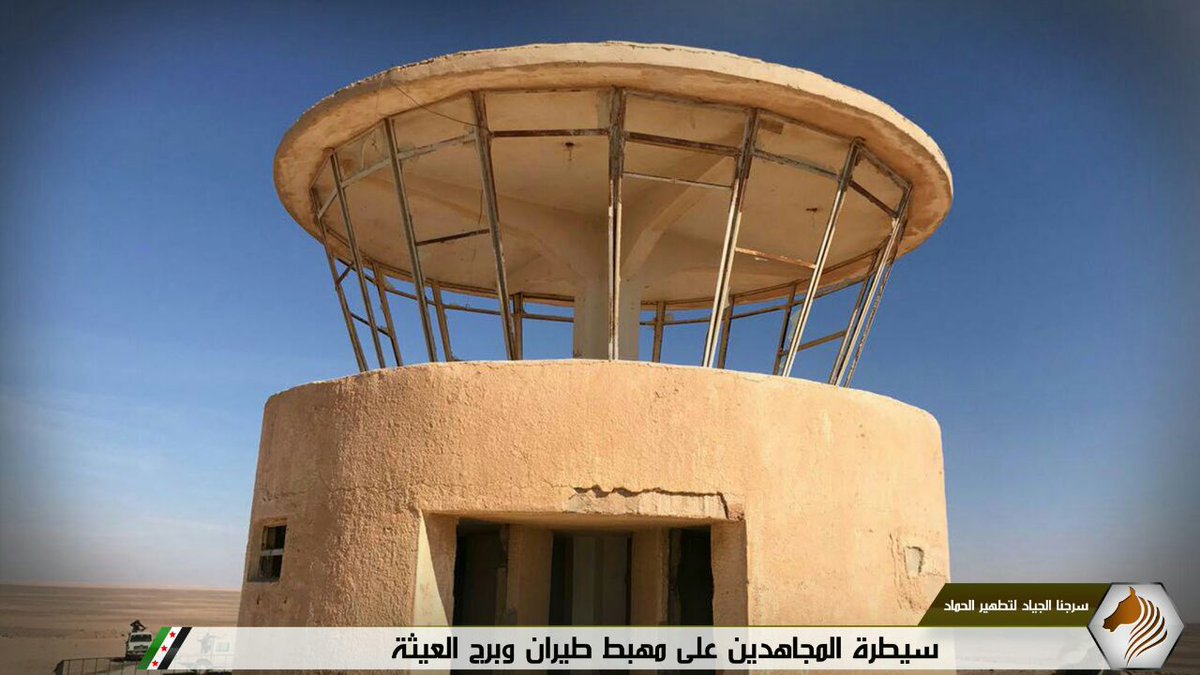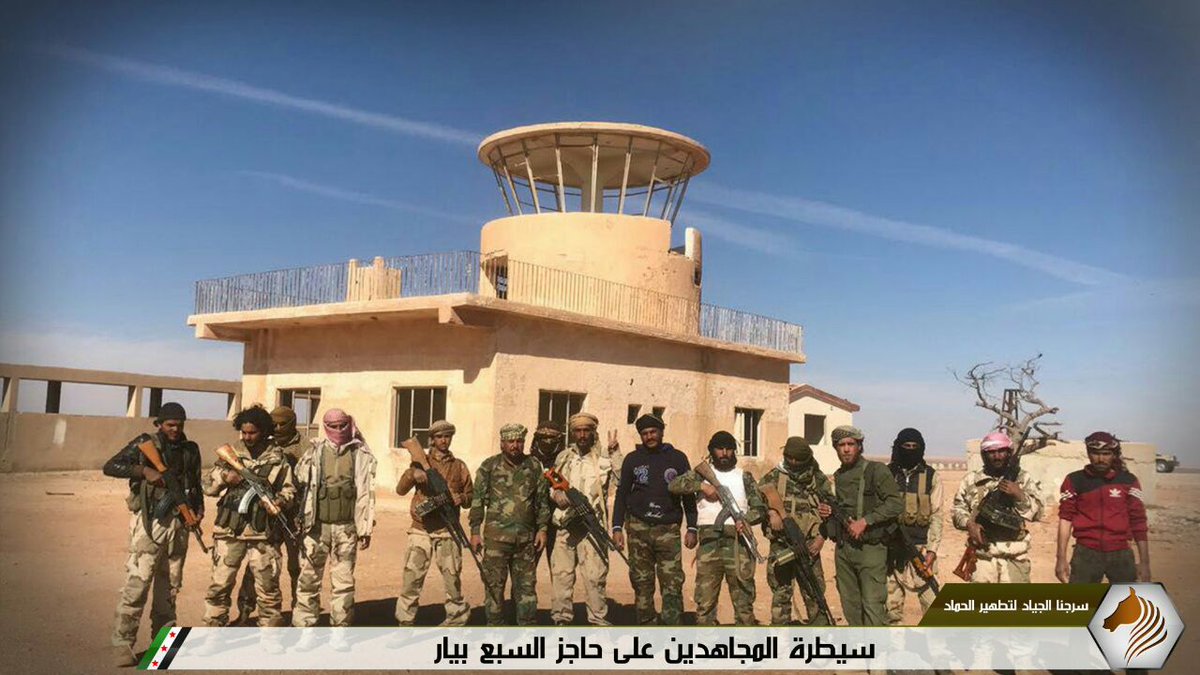Dr Annie Sparrow:
'The horror of the Syrian war, now entering its seventh year, is well-known. What isn’t well-known is that it is the most dangerous place in the world to be a doctor.
We have seen this war-crime strategy play out in the horrendous death toll among Syrian medical personnel – 814 killed, reported in the preliminary inquiry on health workers for the Lancet Commission on Syria. The Russian-backed Syrian government and its allies have killed at least 723 of these healthworkers, and attacked hundreds of hospitals. This is no accident.
This "weaponisation" of healthcare – using people’s need for healthcare as a weapon against them - is at the heart of the government’s war-crime strategy against people who live in parts of the country held by the political opposition.
The Syrian government began pursuing this strategy from the very beginning of the uprising against it, well before it became an outright civil war in July 2012.
It murdered the first Syrian doctor, Dr Ali, on 23 March 2011, in only the second week of the Syrian revolution, kick-started by what was then described as the Arab Spring. Sami, an ambulance driver, was also killed.
We have seen this war-crime strategy play out in the horrendous death toll among Syrian medical personnel – 814 killed, reported in the preliminary inquiry on health workers for the Lancet Commission on Syria. The Russian-backed Syrian government and its allies have killed at least 723 of these healthworkers, and attacked hundreds of hospitals. This is no accident.
This "weaponisation" of healthcare – using people’s need for healthcare as a weapon against them - is at the heart of the government’s war-crime strategy against people who live in parts of the country held by the political opposition.
The Syrian government began pursuing this strategy from the very beginning of the uprising against it, well before it became an outright civil war in July 2012.
It murdered the first Syrian doctor, Dr Ali, on 23 March 2011, in only the second week of the Syrian revolution, kick-started by what was then described as the Arab Spring. Sami, an ambulance driver, was also killed.
In the evening of 22 March 2011, about 200 civilians gathered for a sit-in at the historic Al-Omari mosque in Daraa - 1,300 years old, a tourist attraction, and a national treasure. They were completely unarmed – simply holding up placards and olive branches to protest the oppression and violence of the Assad dictatorship.
The prayer building itself had already become the first "field hospital" – set up to treat protesters that the government had shot during the first week - because the government had prohibited public hospitals from receiving them.
Shortly after midnight, Syrian army soldiers surrounded the mosque. First, they used tear gas to create fog and confusion, before throwing hand-grenades and then opening fire on the protesters in the courtyard. At least 80 people were killed on the spot.
A handful escaped through ancient alleys with the help of those outside the mosque, ferrying out six fatally wounded. All the rest were arrested. No one inside the prayer rooms – at least 25 patients and 50-odd medical personnel and volunteers caring for them - stood a chance.
The prayer building itself had already become the first "field hospital" – set up to treat protesters that the government had shot during the first week - because the government had prohibited public hospitals from receiving them.
Shortly after midnight, Syrian army soldiers surrounded the mosque. First, they used tear gas to create fog and confusion, before throwing hand-grenades and then opening fire on the protesters in the courtyard. At least 80 people were killed on the spot.
A handful escaped through ancient alleys with the help of those outside the mosque, ferrying out six fatally wounded. All the rest were arrested. No one inside the prayer rooms – at least 25 patients and 50-odd medical personnel and volunteers caring for them - stood a chance.
The mosque’s megaphones – normally used for the call to prayer - sent out an appeal for help. Several other mosques heard the message and passed it on. As word spread, the director of the National Hospital of Daraa, just over a mile away, received a direct order from the Syrian government not to respond. Ambulances should not leave the hospital under any circumstances, he was told.
Dr Ali al-Mhamied was at home when he heard the cry for help. He went directly to the hospital, and in violation of the government’s order, mobilised an ambulance, a driver, Sami Zuraykat, and a nurse, Abou Omar Sayasnah. However, shortly after they left, an informer at the hospital contacted the security forces, telling them that an ambulance was on its way.
Arriving at the mosque, they could only rescue Taher Masalme, a 23-year-old student shot in the chest just above his heart. On the way back to the hospital, soldiers lying in wait opened fire on the clearly marked vehicle, killing the driver immediately and hitting Dr Ali in the head.
After the ambulance crashed, more bullets were randomly fired at the car. Then the back doors of the ambulance were opened, and an Iranian army officer working with Syrian forces shot directly at all those inside.
Dr Ali al-Mhamied was at home when he heard the cry for help. He went directly to the hospital, and in violation of the government’s order, mobilised an ambulance, a driver, Sami Zuraykat, and a nurse, Abou Omar Sayasnah. However, shortly after they left, an informer at the hospital contacted the security forces, telling them that an ambulance was on its way.
Arriving at the mosque, they could only rescue Taher Masalme, a 23-year-old student shot in the chest just above his heart. On the way back to the hospital, soldiers lying in wait opened fire on the clearly marked vehicle, killing the driver immediately and hitting Dr Ali in the head.
After the ambulance crashed, more bullets were randomly fired at the car. Then the back doors of the ambulance were opened, and an Iranian army officer working with Syrian forces shot directly at all those inside.
Taher Masalme, the only known survivor, told me: “We were in the ambulance. I was tired but I was awake. The doctor was sitting next to me, holding my hand. He told me we were close to the hospital. That’s when the ambulance was shot at.
"I was shot in my arm and my leg. A bullet went into the doctor’s head and he fell on me. His forehead was touching mine - I could feel his gasps for breath. The driver was shot too but the road was going down a hill so the car kept going till we hit the bridge.
"After the car stopped they shot some more – I was shot in my other arm. Then the back doors opened, the officer opened fire on us, and shut the doors again. I got two more bullets in my right leg. The doctor was also shot again. I felt his breathing stop. After that I passed out."
The medical team could have been arrested, imprisoned, even tortured. But instead they were summarily killed, sending a clear message to every healthcare worker in Dara’a that treatment of any civilian whom the government had tried to kill at any protest rally would not be tolerated.
Civilians who survived initial injuries such as Taher - would be similarly treated. “At the mosque, I was shot once in my chest. By the time I arrived at the hospital, I had been shot five more times - in my back, both my arms, and two in my right leg.”
"I was shot in my arm and my leg. A bullet went into the doctor’s head and he fell on me. His forehead was touching mine - I could feel his gasps for breath. The driver was shot too but the road was going down a hill so the car kept going till we hit the bridge.
"After the car stopped they shot some more – I was shot in my other arm. Then the back doors opened, the officer opened fire on us, and shut the doors again. I got two more bullets in my right leg. The doctor was also shot again. I felt his breathing stop. After that I passed out."
The medical team could have been arrested, imprisoned, even tortured. But instead they were summarily killed, sending a clear message to every healthcare worker in Dara’a that treatment of any civilian whom the government had tried to kill at any protest rally would not be tolerated.
Civilians who survived initial injuries such as Taher - would be similarly treated. “At the mosque, I was shot once in my chest. By the time I arrived at the hospital, I had been shot five more times - in my back, both my arms, and two in my right leg.”
By the time Dr Taysir, a surgeon at the hospital, tried to take another ambulance to the mosque, security forces had already built a barricade in front, and threatened to kill him and his team if he continued. Over the next few hours, under cover of darkness, dozens of corpses were removed from the mosque, the bullet-ridden ambulance was disappeared, fire-fighting hoses were used to hose down the blood-drenched mosque.
The story was reported as if only six had been killed – the six dragged out before security forces took control, also taken to the national hospital, declared dead on arrival, and as such unable to be covered up.
This targeted killing of medical workers continues to this day. On 19 March in Jobar, a suburb just outside Damascus, an air strike targeting an ambulance centre killed a nurse, two paramedics and two ambulance drivers.
The story was reported as if only six had been killed – the six dragged out before security forces took control, also taken to the national hospital, declared dead on arrival, and as such unable to be covered up.
This targeted killing of medical workers continues to this day. On 19 March in Jobar, a suburb just outside Damascus, an air strike targeting an ambulance centre killed a nurse, two paramedics and two ambulance drivers.
Another doctor, Dr Ali Darwish, was killed on Sunday 25 March, suffocating to death after Assad’s chemical attack on the hospital in Hama where he was operating on a patient. He refused to stop operating until the patient’s life was saved, but in doing so inhaled a lethal dose of chlorine.
On a global level, there are now five million Syrian refugees. Polio and other microbes causing crippling and sometimes fatal diseases thrive in areas without healthcare and travel fast. They do not respect borders, which means Assad’s war-crime strategy could affect all of us.
We all need healthcare for our kids, ourselves, our parents – whether vaccinations, antenatal care, chemotherapy, or a hip replacement.
No one will stay in opposition-held parts of the country where there is no doctor, no hospital, no healthcare. Syrians either have to submit to the dictatorship or leave the country. That’s why Assad does it.'
On a global level, there are now five million Syrian refugees. Polio and other microbes causing crippling and sometimes fatal diseases thrive in areas without healthcare and travel fast. They do not respect borders, which means Assad’s war-crime strategy could affect all of us.
We all need healthcare for our kids, ourselves, our parents – whether vaccinations, antenatal care, chemotherapy, or a hip replacement.
No one will stay in opposition-held parts of the country where there is no doctor, no hospital, no healthcare. Syrians either have to submit to the dictatorship or leave the country. That’s why Assad does it.'

